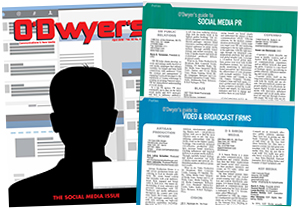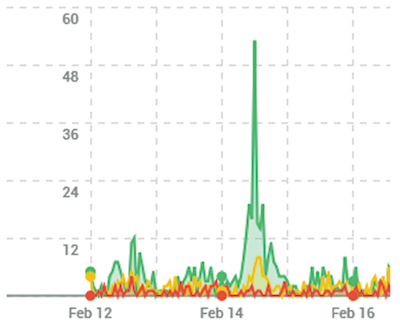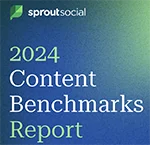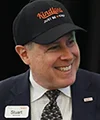|
|
|
|
An article about producing life-sized body parts and tissues using living cells as the “ink” in a 3D printer received more than 20,000 mentions over the last three months. Canadian Prime Minister Trudeau recently promised to end his country’s ban on homosexuals donating blood and organs. And a writer for the New York Times reported scientists are curious about the potential transfer of person-to-person cancer cells.
These trending headlines were uncovered while conducting a social listening exercise to assess online chatter related to organ donation and what’s driving coverage of this topic. Using the social analytic tool Talkwalker, we learned these three articles alone had a combined reach of more than 40 million people.
Understanding the headlines and social conversations related to your brand, issue or cause is the first step in collecting valuable information about your audience. By keeping a beat on your audiences’ needs and motivations through monitoring the social landscape, you can better reach people where they’re already interacting, and ultimately, influence behavior.
|
|
Social listening can also inform when a brand should join a conversation. On February 14, National Donor Day, a dramatic spike in organ donor-related conversation was measured in both volume and positive sentiment (as noted by the green line in the graph to the right). This event offered an opportunity to reach and interact with a broader audience who was already engaged around the donation topic.
The Health Resources and Services Administration — part of the U.S. Department of Health and Human Services — recognizes the value of identifying key opportunities for driving greater awareness to encourage more people to register as organ, eye, and tissue donors. The government agency leverages Facebook’s targeted reach as one of many communications outlets to educate the general public. In monitoring the organdonor.gov Facebook community, HRSA noticed a common theme: many commenters were inclined to share emotional, life-changing stories about receiving a transplant, or how their loved ones saved lives by donating organs. This community was becoming a support group for those with a connection to the cause.
This insight drove HRSA to develop #MadePossibleMonday, a user-generated content series designed to spread awareness about organ donation. This UGC campaign, fueled by social intelligence, allowed HRSA to share inspirational stories, not only demonstrating to community members that they were heard, but also activating those people to share the message with their networks, and ultimately driving new users to register. #MadePossibleMonday content resulted in more than two million organic impressions and made up nearly 10 percent of all shared content from the organdonor.gov Facebook page in 2015.
Most organizations recognize the need to evaluate conversations within their own communities, but those that understand the entire social conversation landscape and act on what they learned gain immense value. This requires clear objectives, planning and technology. Below are tips for developing an informed social listening program.
Choose the right tool. To listen effectively, it is important to have the right tool. You will want to assess what level of control is available, as well as the flexibility of the search parameters. If you have a large team, workflow may be important criteria. If your audience is global or multi-lingual, that’s another consideration. How easy is it to evaluate the data and create reports? Do you need a real-time dashboard? Social monitoring technologies range from free tools providing basic social data to enterprise-level platforms integrated into social media management systems and business solutions. Some of the advanced tools also query broadcast TV data, providing a holistic view of audience sentiment over time.
Establish clear objectives. Before setting up social listening queries, first define what the organization wants to accomplish. Objectives may be as simple as knowing the top five keywords and overall conversation sentiment, or they may be very specific, such as identifying the right micro-moments around which a brand can engage.
Plan the search. Have a list of keywords, phrases, websites, etc., to jumpstart your search. Define the audience by specifying geography, language, platforms, sources, and a time period to evaluate. Over time, refine the search query to add and/or exclude erroneous keywords and phrases, people, websites, and brands.
Measure. Evaluate activity reports to establish benchmarks. Keep an eye on conversation volume, how a post or conversation(s) spread across social networks, where and when messages gain traction, and which sources were most important in helping them go viral. If activity spikes occur, evaluate the source and whether the increase in traffic is successful content or a crisis in the making.
Some important metrics to analyze are share of voice, a percentage of branded conversations within the entire conversation sphere; sentiment, a measure of positive, negative or neutral conversation; volume, the total number of mentions distributed by channel and frequency; top keywords, a list of words, phrases and hashtags mentioned most frequently; network analysis, the reach of individuals contributing to the conversation; key conversations, the summary of the conversations with the largest impact on reach, shares and volume; and top influencers, the key individuals that emerge as dominating the social landscape. Tracking and engaging these influencers can help brands dramatically extend their message.
A social listening strategy doesn’t necessarily have an ending point. Communications pros can gain insights into conversations, influencers, brand impact and much more by applying a “test and learn” filter to innovate based on the real-time findings that are uncovered.
* * *
Lindsey Goebel is director of social media & content marketing at Crosby Marketing.





 What if companies could harness the fury of online outrage into a force for good? This is precisely where companies can start turning the trolls into brand champions.
What if companies could harness the fury of online outrage into a force for good? This is precisely where companies can start turning the trolls into brand champions. Audiences interacted with brand content far more often on Facebook and Instagram in 2023 than they did via X (formerly Twitter), according to a report that tracked engagement trends across different social networks.
Audiences interacted with brand content far more often on Facebook and Instagram in 2023 than they did via X (formerly Twitter), according to a report that tracked engagement trends across different social networks. Can public relations help counteract the dissension fostered by the power of digital platforms to spread hate, fear and confusion?
Can public relations help counteract the dissension fostered by the power of digital platforms to spread hate, fear and confusion? The number of Americans who get their news from TikTok has quadrupled in the last three years, according to a recent Pew Research Center report.
The number of Americans who get their news from TikTok has quadrupled in the last three years, according to a recent Pew Research Center report.


 Have a comment? Send it to
Have a comment? Send it to 
No comments have been submitted for this story yet.